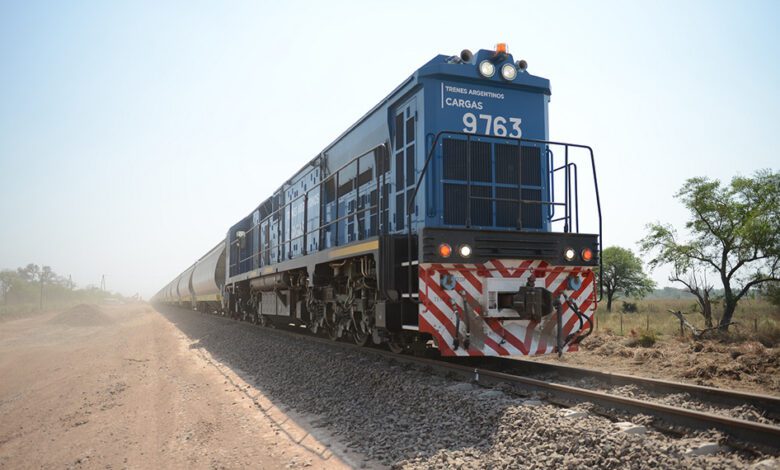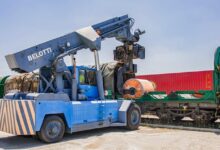All About Sustainable Rail freight: Advantages, Cost and Why it is Best?

Rail freight is the transportation of cargo via train. It is a mode of transport that specializes in moving goods, such as raw materials and finished products, over long distances.
Rail freight is a crucial component of the logistics industry, utilized by businesses to transport large quantities of goods across the country.
Rail freight typically involves the use of large trailers, which are loaded onto trains for transport to their destination. It is one of the best methods of freight transport, or as by the Swedish term Godstransport. In this blog post, we are going to discuss rail freight in depth.
What is the cost of rail transport?
The cost of rail transport varies depending on a range of factors including distance, speed, type of cargo and infrastructure required. In general, rail transport is often seen as a more cost-effective option for transporting large volumes of goods over long distances.
This is due to the fact that trains can carry much larger loads than other modes of transport and require less fuel per kilometer. Additionally, rail transport can be utilized to transport cargo directly from one location to another without the need for intermediary facilities which can further reduce costs.
Advantages of rail transport also include environmentally friendly credentials due to its low carbon emissions and the ability to bypass road congestion.
While rail transport can require significant initial investment in infrastructure, for larger and heavier cargo loads, it can offer a more efficient and cost-effective solution.
When does Rail Freight Transportation Make Sense?
Rail freight transportation makes sense when it comes to the transportation of heavy goods or large quantities of goods over long distances. Rail provides an efficient means of transportation as it is not limited by traffic congestion and can usually carry heavier loads than other modes of transport.
Freight moving by rail is often cheaper, more fuel-efficient, and environmentally friendlier compared to other methods of transportation such as road or air.
Rail freight networks are extensive, covering most large cities and industrial areas, making it an ideal choice for businesses that require the transportation of large volumes of goods.
What are the main advantages of rail transport?
Rail transport, also known as railway transport, is a mode of transport that utilizes a wide network of railroads and tracks to transport cargo and passengers. The main advantage of rail transport is its ability to move large amounts of freight or cargo quickly and efficiently.
Unlike road freight, trailers can be loaded onto trains, allowing for the transportation of heavier and bulkier goods. Another advantage of rail transport is its lower emission rates, making it a more environmentally friendly option compared to road transport.
Additionally, theft and damage to cargo is less likely to occur when using rail transport. Overall, the advantages of rail transport make it a preferred mode of transport for bulk goods and large-scale cargo delivery.
1. Shipping by rail is eco-friendly with low exhaust emissions
Shipping by rail is a highly eco-friendly mode of transport, especially for freight. Rail transport emits far less CO2 and other harmful emissions compared to other forms of transport such as air or sea freight.
For example, air freight consumes 139 tons of CO2 whereas rail freight consumes only five tons of CO2 for the same distance. In addition, shipping by rail is often used in combination with sea and air transport, particularly in Northern Europe.
The combination of these modes of transport provides efficient and effective transportation while reducing the adverse impact of transport on the environment. Therefore, transportation companies should continue using rail freight as a sustainable option for their shipping needs.
2. Rail freight is fast and reliable with short lead times
Rail freight is an efficient and reliable mode of transport that significantly reduces lead times. The use of rail allows for quick and punctual delivery, making it an ideal choice for businesses needing to move large amounts of freight quickly.
Unlike road freight, rail freight is not subject to the same amount of congestion, making it a faster and more efficient option for transporting goods. In Northern Europe, rail is particularly popular with haulers due to its speed and reliability, making it a popular choice for businesses operating in the region. Overall, rail freight is the ideal solution for those looking for a fast and efficient transport method that can reliably deliver large amounts of freight over long distances.
3. Rail freight is safe and efficient with GPS tracking
Rail freight transportation is safe and efficient owing to its advanced GPS tracking system. The railway infrastructure provides optimal transport solutions for freight shipment. With the help of advanced tracking technology installed in trains, the destination, time of arrival, and safety of cargo can be monitored easily.
The GPS tracking system ensures that the transit of goods is tamper-proof and minimizes the risk of theft. Compared to other modes of transportation, rail freight has a lower accident rate, which makes it an optimal transport solution for companies that require safe and efficient shipment of goods.
Additionally, by using rail for freight transportation, companies can conserve fuel and lessen their carbon footprint. With its cost-effective and reliable freight services, rail transport provides a sustainable alternative to road and air transport.
Concluding Remarks
Rail freight shipping is a great option for transporting cargo across long distances. Compared to truck transportation, rail freight offers more capacity and cost-effective shipping solutions. Rail transport can carry a variety of commodities, including raw materials, consumer goods, and heavy machinery.
Additionally, rail freight is one of the most eco-friendly modes of transport available, as it produces fewer emissions and has a lower carbon footprint compared to other transport options.
Rail shipments also have a lower risk of theft and damage compared to truck shipments, as they are more secure and have a stable transport environment. All these factors make rail freight shipping an appealing choice for businesses looking to transport large amounts of goods over long distances.





